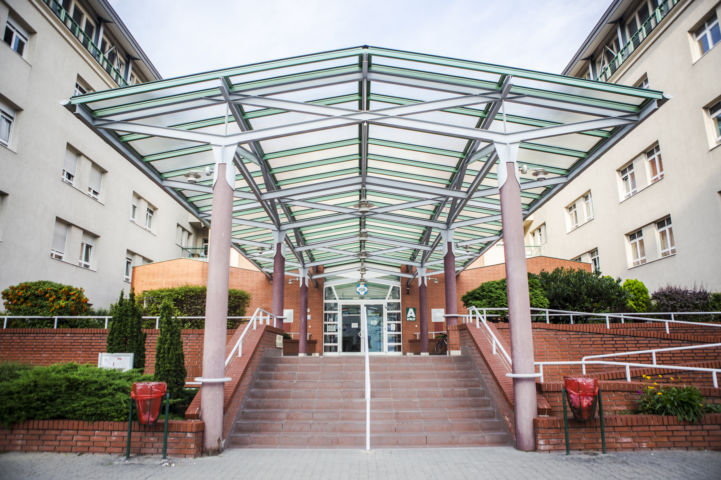St Imre Hospital (former Saline Bath)
From Bikás Park Station towards the city center along Tétényi Street you will get to St Imre Hospital built in the 1950s.

The recently refurbished modern building, however, had replaced the internationally renowned Erzsébet Saline Bath that opened around the mid-19th century. In fact, it was just an accident that the bath was established. In 1854, György Schleisz, the owner of the site dug a well for irrigation but the water was bitter. A reputable pharmacist of the time, Ferenc Unger could buy the plot and established a drinking hall as well as continued developments. Just a year later two wells called Hildegard and Erzsébet supplied a bath hall.
Furthermore he founded a restaurant and a bottling plant and soon gained continent-wide reputation for his curative bath rich in Glauber’s salt. Later owners continued development and in the 1880s a multi-storey bath complex with a hotel and chapel was built by the design of Miklós Ybl.

By the turn of the century 20 springs were used alternately to cure digestive issues, female-specific diseases, arthritis and inflammations. The water was supposed to help even with overweight.

The saline bath was so popular that despite the scarce population tram service granted access from the city center. Right before WW2 the bath became a state-owned enterprise and underwent a considerable refurbishment. Following WW2, however, city management decided not to restore and preserve the bath despite its past success and moderate damages during the war.
In the early 1950s the deteriorated Ybl buildings were pulled down and Tétényi Street Hospital opened in 1954. The curative water is still there deep down but springs were plugged, contaminated or some dried out.

-

Photo: funiQ -

Photo: funiQ -

Photo: funiQ -

Photo: funiQ
For the time being, further plans to exploit this exceptional value again are theoretical.
Recommended tours
Discovering underground line M4 Underground line 4 has brought elegance and style to the world of underground transport in Budapest. Contemporary architecture makes everyday commutes an artistic experience for locals. Surface level attractions will also be discovered during the tour.
